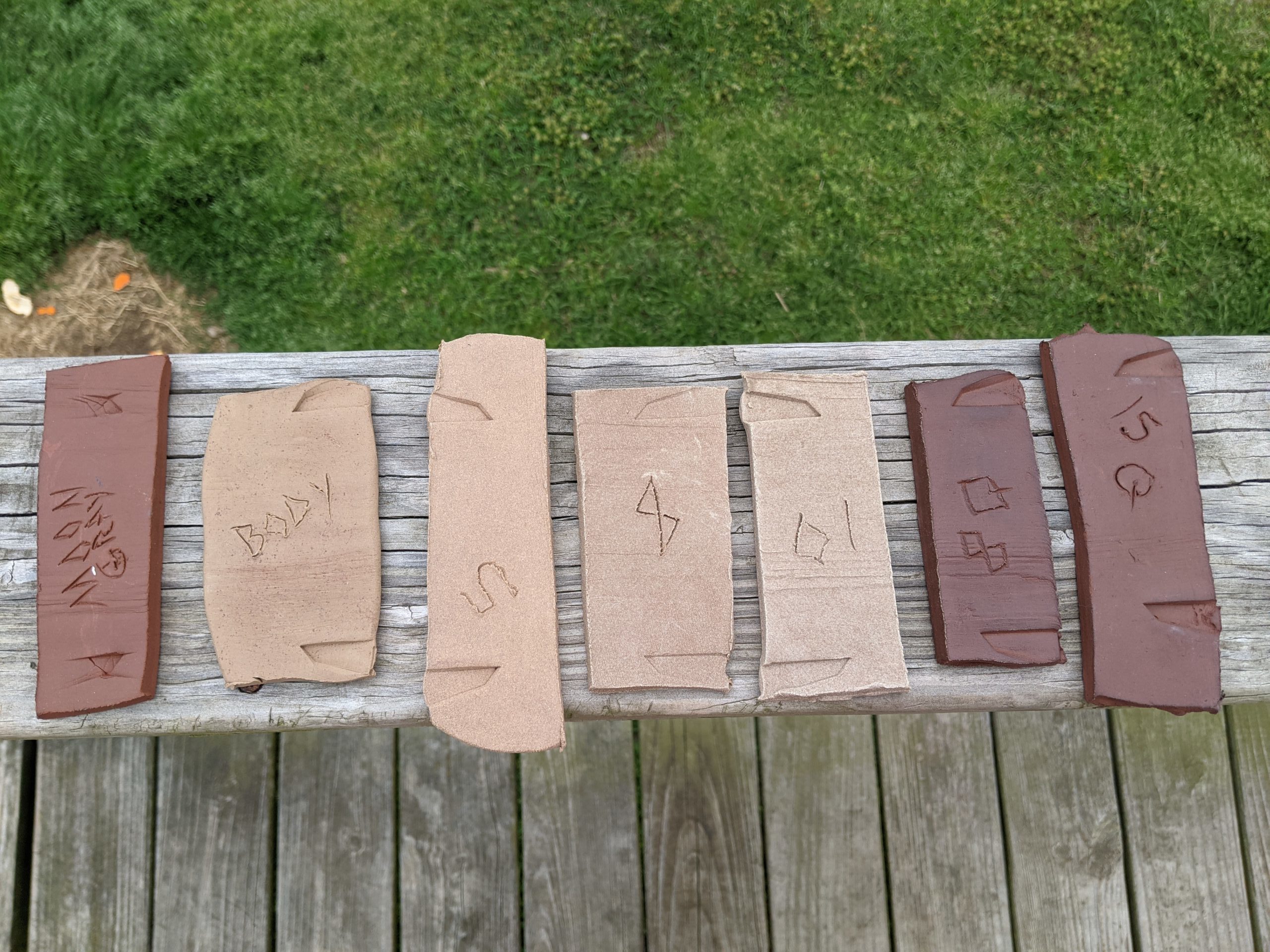
I goofed with this load of bisque. I didn’t make sure my thermocouple was completely inserted (it wasn’t even all the way though the kiln wall). The load was badly overfired (for bisque). The test tiles were a known clay mix that tested at 1.7% porosity at cone 6.5, so I porosity tested one of those. The result was 2.7%. So I decided to just go ahead and test all the other tiles.
The results were interesting (please see bottom for the most exciting results). I think this must have gone to cone 5. The limestone bodies are a sandy local light colored clay with 5, 8, and 10 additions of a local limestone. The quarry is my reclaim with additions of 8 and 15 of a clay that comes from the same local limestone quarry. The moon clay is 100% of a clay that comes from the community of Moon Oklahoma. The “body” tile is the light colored clay with the sand removed with an addition of my silty material and 10% nepheline syenite.

First observation is I’m pretty sure I mixed up the quarry test batches. Every measurement is backwards of what I would expect. The second is that I believe the Limestone 10 is over fired and expanded. While the limestone 8 is just reaching maturity and 5 is underfired. The quote below explains why limestone and whiting are not commonly used as clay body fluxes. However, modern electric kilns fire much more evenly than the large high fire kilns that were (and are) used to fire stoneware. I’m hopeful I can make this work.
However calcium oxide cannot be used in vitreous bodies or those to be fired above 1100°C (2012°F). Above 1100°C, it becomes an active flux and is therefore not practical in bodies. The rapid fluxing action makes the body mature too rapidly. It is therefore difficult to successfully fire because a kiln will contain too many pieces that are under-mature and too many that are overfired and distorted. Clays naturally high in calcium oxide do not make good stoneware bodies and are therefore used mostly in the 1000°C to 1080°C range (1832°F to 1976°F).
Hamer, F., & Hamer, J. (1997). THE POTTER’S DICTIONARY OF MATERIALS AND TECHNIQUES (4th ed.). University of Pennsylvania.

The body tile is at 1%. It fired to 0.5% porosity at cone 6. So again, probably right around cone 5. I will fire items made with this mix to cone 5.
By far the most exciting result was the moon clay. This was a gray clay that turned red when exposed to air. I dug two samples from this creek the first sample had some sand in it and was not vitrified at cone 6. This sample was much more pure and I’m excited to get more of it. The color is nice, shrinkage is great, it will require little processing, and it apparently needs no additions. A wild clay like that is almost impossible to find…..No I won’t tell you where exactly I dug it.
| Test Tile | Drying Shrinkage | Fired Shrinkage | Fired Porosity |
|---|---|---|---|
| Moon | 7 | 12 | 1.7 |
| Limestone 5 | 6.8 | 9 | 8.5 |
| Limestone 8 | 8.0 | 11.72 | 2.3 |
| Limestone 10 | 6.2 | 9.88 | 2.3 |
| Quarry 8 | 9.5 | 14.84 | 1.9 |
| Quarry 15 | 10 | 13.56 | 3.0 |
| Body | 7.5 | 13.25 | 1 |


